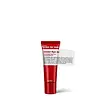What's inside
What's inside
 Key Ingredients
Key Ingredients

 Benefits
Benefits

 Ingredients Side-by-side
Ingredients Side-by-side

Water
Skin ConditioningGlycerin
HumectantSqualane
EmollientAmmonium Acryloyldimethyltaurate/Vp Copolymer
Sodium Hyaluronate
HumectantHesperidin Methyl Chalcone
AntioxidantSaccharomyces/Xylinum/Black Tea Ferment
Skin ConditioningDipeptide-2
Skin ConditioningPalmitoyl Tetrapeptide-7
Skin ConditioningSteareth-20
CleansingPhenoxyethanol
PreservativeEthylhexylglycerin
Skin ConditioningSodium Benzoate
MaskingPotassium Sorbate
PreservativeCitric Acid
BufferingSodium Citrate
BufferingWater, Glycerin, Squalane, Ammonium Acryloyldimethyltaurate/Vp Copolymer, Sodium Hyaluronate, Hesperidin Methyl Chalcone, Saccharomyces/Xylinum/Black Tea Ferment, Dipeptide-2, Palmitoyl Tetrapeptide-7, Steareth-20, Phenoxyethanol, Ethylhexylglycerin, Sodium Benzoate, Potassium Sorbate, Citric Acid, Sodium Citrate
Water
Skin ConditioningSodium Magnesium Silicate
Propanediol
SolventMagnesium Aluminum Silicate
AbsorbentPhenoxyethanol
PreservativeLecithin
EmollientKappaphycus Alvarezii Extract
Skin ConditioningCaffeine
Skin ConditioningSynthetic Fluorphlogopite
Acetyl Glutamine
Skin ConditioningHesperidin Methyl Chalcone
AntioxidantCaesalpinia Spinosa Fruit Extract
Skin ProtectingTitanium Dioxide
Cosmetic ColorantCaprylyl Glycol
EmollientEthylhexylglycerin
Skin ConditioningHexylene Glycol
EmulsifyingSteareth-20
CleansingSh-Oligopeptide-1
Skin ConditioningSh-Oligopeptide-2
Skin ConditioningDipeptide-2
Skin ConditioningSodium Hyaluronate
HumectantSh-Polypeptide-1
Skin ConditioningSh-Polypeptide-9
Skin ConditioningSh-Polypeptide-11
Bacillus
Skin ConditioningBoswellia Serrata Extract
Skin ConditioningCentella Asiatica Extract
CleansingPalmitoyl Tetrapeptide-7
Skin ConditioningButylene Glycol
HumectantBetula Alba Bark Extract
MaskingChlorhexidine Digluconate
AntimicrobialTin Oxide
Abrasive1,2-Hexanediol
Skin ConditioningPotassium Sorbate
PreservativePolygonum Cuspidatum Root Extract
AntioxidantPEG-12 Dimethicone
Skin ConditioningCamellia Sinensis Leaf Extract
AntimicrobialSodium Benzoate
MaskingIron Oxides
Water, Sodium Magnesium Silicate, Propanediol, Magnesium Aluminum Silicate, Phenoxyethanol, Lecithin, Kappaphycus Alvarezii Extract, Caffeine, Synthetic Fluorphlogopite, Acetyl Glutamine, Hesperidin Methyl Chalcone, Caesalpinia Spinosa Fruit Extract, Titanium Dioxide, Caprylyl Glycol, Ethylhexylglycerin, Hexylene Glycol, Steareth-20, Sh-Oligopeptide-1, Sh-Oligopeptide-2, Dipeptide-2, Sodium Hyaluronate, Sh-Polypeptide-1, Sh-Polypeptide-9, Sh-Polypeptide-11, Bacillus, Boswellia Serrata Extract, Centella Asiatica Extract, Palmitoyl Tetrapeptide-7, Butylene Glycol, Betula Alba Bark Extract, Chlorhexidine Digluconate, Tin Oxide, 1,2-Hexanediol, Potassium Sorbate, Polygonum Cuspidatum Root Extract, PEG-12 Dimethicone, Camellia Sinensis Leaf Extract, Sodium Benzoate, Iron Oxides
Ingredients Explained
These ingredients are found in both products.
Ingredients higher up in an ingredient list are typically present in a larger amount.
Dipeptide-2 is a peptide. It can help to reduce the effects of aging.
Ethylhexylglycerin (we can't pronounce this either) is commonly used as a preservative and skin softener. It is derived from glyceryl.
You might see Ethylhexylglycerin often paired with other preservatives such as phenoxyethanol. Ethylhexylglycerin has been found to increase the effectiveness of these other preservatives.
Hesperidin Methyl Chalcone is an antioxidant and is a type of silicone.
Palmitoyl Tetrapeptide-7 (formerly Palmitoyl Tetrapeptide-3) is a lab-made peptide with anti-inflammatory and skin-repairing benefits. It's made up of four amino acids (glycine, glutamine, proline, and arginine) and palmitic acid (which helps it penetrate skin more effectively).
This ingredient helps reduce inflammation by limiting the production of interleukin-6 (IL-6), a chemical that triggers inflammatory responses, particularly after UV exposure.
Less inflammation = slower collagen breakdown and a longer-lasting, youthful appearance.
Palmitoyl Tetrapeptide-7 also stimulates collagen production and supports a healthier skin barrier.
Over time, this can improve skin firmness, hydration, and reduce the appearance of fine lines. It’s commonly paired with Palmitoyl Tripeptide-1 in the well-known Matrixyl 3000 complex for enhanced anti-aging effects.
This ingredient has been shown to be effective and safe in cosmetic use and you'll typically find it in small amounts (less than 0.01%).
Due to its palmitic acid base, it may not be safe for Malassezia folliculitis.
Read more about other common types of peptides here:
Learn more about Palmitoyl Tetrapeptide-7Phenoxyethanol is a preservative that has germicide, antimicrobial, and aromatic properties. Studies show that phenoxyethanol can prevent microbial growth. By itself, it has a scent that is similar to that of a rose.
It's often used in formulations along with Caprylyl Glycol to preserve the shelf life of products.
Potassium Sorbate is a preservative used to prevent yeast and mold in products. It is commonly found in both cosmetic and food products.
This ingredient comes from potassium salt derived from sorbic acid. Sorbic acid is a natural antibiotic and effective against fungus.
Both potassium sorbate and sorbic acid can be found in baked goods, cheeses, dried meats, dried fruit, ice cream, pickles, wine, yogurt, and more.
You'll often find this ingredient used with other preservatives.
Learn more about Potassium SorbateSodium Benzoate is a preservative. It's used in both cosmetic and food products to inhibit the growth of mold and bacteria. It is typically produced synthetically.
Both the US FDA and EU Health Committee have approved the use of sodium benzoate. In the US, levels of 0.1% (of the total product) are allowed.
Sodium benzoate works as a preservative by inhibiting the growth of bacteria inside of cells. It prevents the cell from fermenting a type of sugar using an enzyme called phosphofructokinase.
It is the salt of benzoic acid. Foods containing sodium benzoate include soda, salad dressings, condiments, fruit juices, wines, and snack foods.
Studies for using ascorbic acid and sodium benzoate in cosmetics are lacking, especially in skincare routines with multiple steps.
We always recommend speaking with a professional, such as a dermatologist, if you have any concerns.
Learn more about Sodium BenzoateSodium Hyaluronate is hyaluronic acid's salt form. It is commonly derived from the sodium salt of hyaluronic acid.
Like hyaluronic acid, it is great at holding water and acts as a humectant. This makes it a great skin hydrating ingredient.
Sodium Hyaluronate is naturally occurring in our bodies and is mostly found in eye fluid and joints.
These are some other common types of Hyaluronic Acid:
Learn more about Sodium HyaluronateSteareth-20 is a waxy compound used to emulsify ingredients. It is created from stearyl alcohol.
It possesses surfactant properties. This means it reduces surface tension and helps oils, dirt, and pollutants to be washed away.
The 20 stands for the number of ethylene oxide used to create this ingredient.
Learn more about Steareth-20Water. It's the most common cosmetic ingredient of all. You'll usually see it at the top of ingredient lists, meaning that it makes up the largest part of the product.
So why is it so popular? Water most often acts as a solvent - this means that it helps dissolve other ingredients into the formulation.
You'll also recognize water as that liquid we all need to stay alive. If you see this, drink a glass of water. Stay hydrated!
Learn more about Water